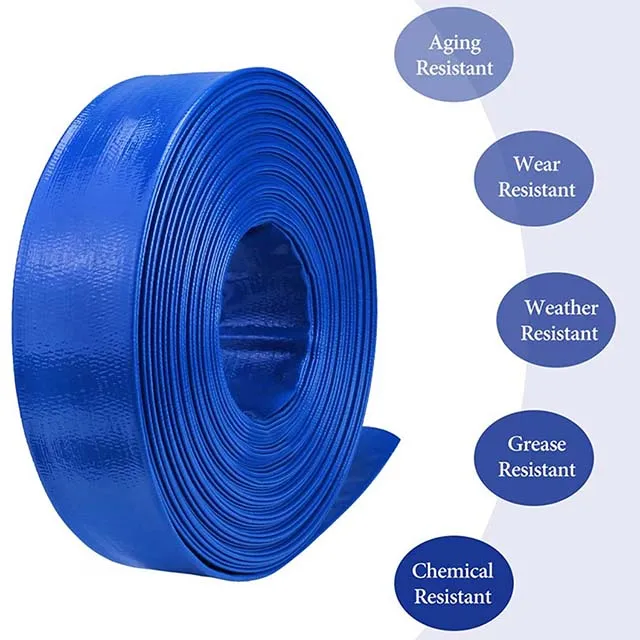Durable High-Pressure Pneumatic Hoses for Industrial Applications and Efficient Fluid Transfer
Understanding High Pressure Pneumatic Hoses
High pressure pneumatic hoses are critical components within various industrial and engineering applications, serving as conduits for compressed air and other gases. The performance of these hoses directly influences the efficiency, safety, and functionality of pneumatic systems across sectors such as manufacturing, construction, and automotive industries.
What are High Pressure Pneumatic Hoses?
High pressure pneumatic hoses are designed to withstand substantial internal pressures, usually exceeding 150 psi. They are crafted from a mixture of synthetic rubbers, thermoplastics, and reinforced materials, ensuring durability and reliability. Their robust construction allows them to handle the aggressive nature of compressed air and adapt to the demanding environments they often find themselves in.
These hoses are generally categorized by their pressure ratings, which indicate their maximum safe operating pressure. This ensures that users select the appropriate type for their specific application, reducing the likelihood of failures or accidents.
Key Features
1. Material Composition High pressure pneumatic hoses are made with materials like PVC, polyurethane, and rubber. Each material offers unique benefits. For instance, PVC hoses are lightweight and flexible, while rubber hoses provide excellent abrasion resistance. Thermoplastic hoses combine the benefits of both, catering to high-pressure needs while remaining lightweight.
2. Reinforcement To endure high pressure, these hoses often incorporate multiple layers of reinforcement, such as textile or steel wire braiding. This not only enhances strength but also improves the hose’s resistance to kinking and bursting, providing users with safe and reliable performance.
3. Temperature Tolerance The operational environment can vary significantly, which is why many high pressure pneumatic hoses are designed to function within a wide temperature range. This feature ensures that the hose maintains its integrity and performance characteristics, whether in hot or cold conditions.
high pressure pneumatic hose

4. Flexibility and Maneuverability Despite their high pressure capabilities, many of these hoses are engineered for flexibility. This allows them to be easily routed in confined spaces and work effectively within dynamic applications where movement is essential.
Applications
High pressure pneumatic hoses serve a broad array of applications. In manufacturing, they are commonly used for powering pneumatic tools and machinery. In the construction sector, they facilitate tasks involving heavy equipment, such as jackhammers and nail guns, where consistent air pressure is crucial for effective operation.
Additionally, in the automotive industry, high pressure hoses are vital for systems like air brakes and air suspension systems, where precise control is necessary. Their reliability ensures that equipment operates at optimal performance levels, minimizing downtime and enhancing productivity.
Maintenance and Safety
Proper maintenance of high pressure pneumatic hoses is vital to ensure safety and longevity. Regular inspections for signs of wear, leaks, or abrasions can prevent potential failures. Users should also adhere strictly to the manufacturer’s guidelines regarding pressure ratings and operating temperatures to avoid catastrophic incidents.
Moreover, using hose fittings and connectors that match the specifications of the hose is crucial. Improper fittings can create weak points that may lead to failures under pressure.
Conclusion
High pressure pneumatic hoses are indispensable in modern industries, providing safe and efficient ways to transport compressed air and gases. Understanding their construction, features, and applications allows businesses to make informed choices that enhance operational efficiency. By prioritizing proper maintenance and adhering to safety guidelines, organizations can significantly reduce risks and enhance the performance of their pneumatic systems.
-
Top Quality Oxy Acetylene Hoses for Sale Fit for Welding DemandsNewsJul.28,2025
-
The Future of Pneumatic Air Tubes in IndustryNewsJul.28,2025
-
Superior and Reliable LPG Hose Pipe Solutions for Every NeedNewsJul.28,2025
-
Exceptionally Durable and Versatile Premium Braided PVC TubingNewsJul.28,2025
-
Best Adapters for Connecting Garden Hose to PVC Pipe ConnectionsNewsJul.28,2025
-
The Essential Role of LPG Hoses in Safe and Efficient Gas DistributionNewsJul.16,2025














